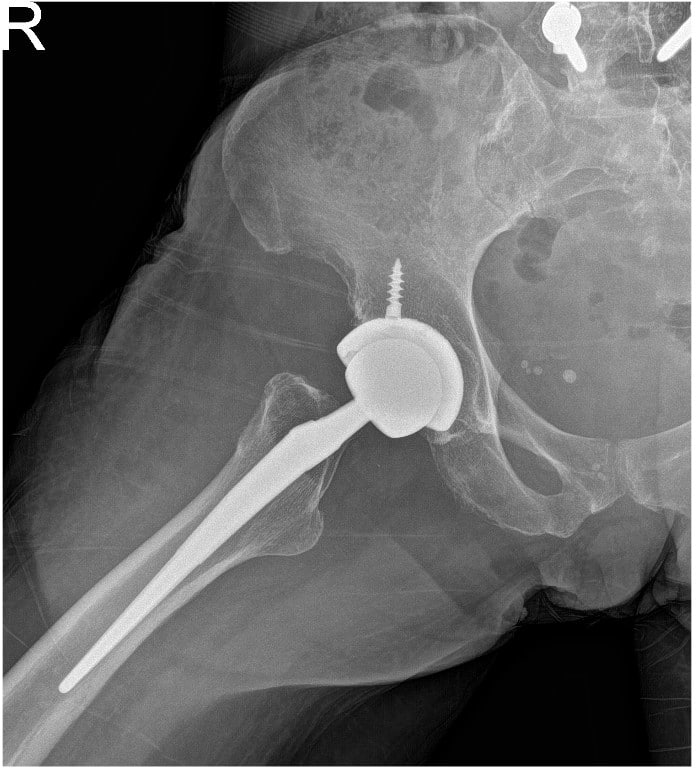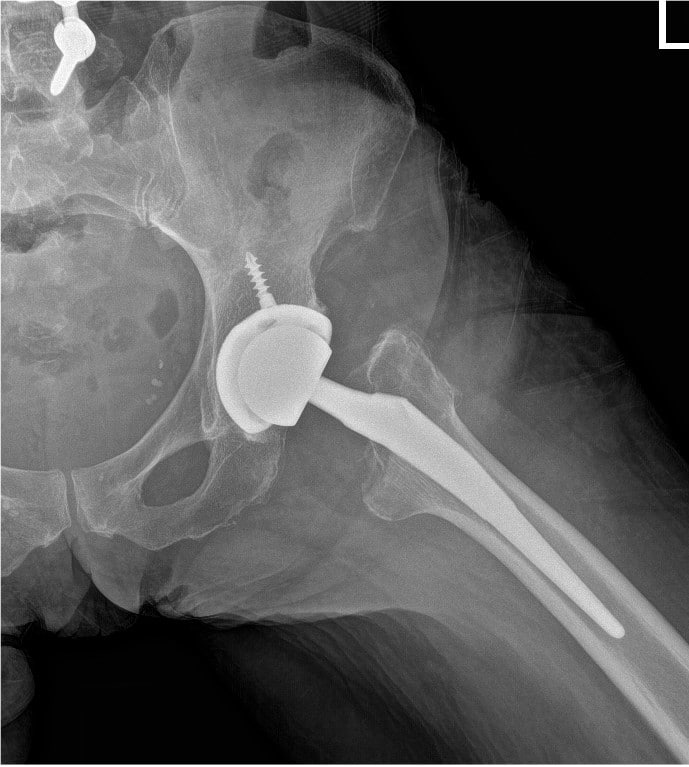Case Study: Bilateral Total Hip Replacement
in a 65 yr. old female
Bilateral Total Hip Replacement – 65 yr. old female
A 65 year old woman presents with bilateral hip pain. Patient currently works as a teacher in a middle school. Patient states that it has become very difficult for her to conduct her classroom and her home activities due to the severity and discomfort from her hips. Patient has tried numerous non surgical options prior to coming into our office, as physical therapy, aqua therapy, massage therapy, and cortisone injections.
All facets have failed this patient in the category of relief. Review of the patients’ preoperative films, show significant osteoarthritis and degeneration. The patient’s lifestyle and medical history were overall good with no prior medical ailments. The patient was a prime candidate for a bilateral total hip replacement.
The patient underwent the bilateral total hip replacement under fluoroscopy control. The patient was positioned in the supine position and both lower extremities were draped and prepped in the usual sterile manner. A curvilinear incision centered over the left hip was used for the arthrotomy. The anterior approach to the hip was then developed and the bone was then exposed in situ. Dissection was made and the head was then removed. The acetabulum was then exposed.
The remainder of the labrum was then removed. The acetabulum was sequentially reamed. The final shell was then placed into position in the correct abduction and anteversion. A screw was used for additional stability. A poly was placed over the shell. Attention was then turned towards the femur. The contralateral extremity was placed over a Mayo stand and the left lower extremity was placed in a figure of 4 position. The canal was sequentially broached.
The final broach was left into position. The trunnion and the head were placed over the broach. The hip was then reduced trialed through a full range of physiological motion and the hip was stable in all physiological range of motion. Fluoroscopy was obtained to ensure the correct length. Hip was dislocated. The trial components were then removed. Final components were then placed into position and the hip was then reduced. Thorough lavage was given. The wound was then closed in layers.
Similarly on the right hand side, a curvilinear incision was made. The patient was found to be stable to undergo a second hip replacement. The anterior approach was developed over to the right hip, though head of the femur was exposed in situ resection was made. The head was then removed. The acetabulum was then exposed. The labrum was then debrided. The acetabulum was sequentially reamed and the final shell was then placed into position in the correct abduction and anteversion.
A screw was used for additional fixation. The poly was then placed over the shell. The femur was then exposed after placing the contralateral extremity over the mayo stand and a figure of 4 position was used to broach the canal. Final broach was left into position. The head and trunnion were then placed over the broach and the hip was reduced. The hip was then trialed through a full range of physiological motion and the hip was stable through all physiological range of motion.
Fluoroscopy was carried out to ensure that both the limb lengths were equal. The trial components were then removed and the final components were placed into position and the hip was then reduced. Thorough lavage was given. The hip was then closed in layers. The patient was then transferred to the postoperative care unit in stable condition.

The patient was transferred to a rehabilitation facility for 5 days postoperatively to monitor for DVT, and physical therapy measures. The patient was released with no DVT and great prognosis from the therapists. Patient returned to the office for follow up and stated pain levels were at a 3/10 at the 6 week time frame.
The patient was to continue physical therapy and the HEP program for strengthening and ROM. At the 3 month postoperative visit the patient is at a 0/10 pain level with great ROM, weight bearing status and gait. Patient advised that since her surgical procedure and returning to work, she is pain free and can interact with her students the way she once used to. The patient planned on entering a walk marathon her students were hosting. The patient and myself are extremely pleased with the results of her Bilateral total hip replacement.

